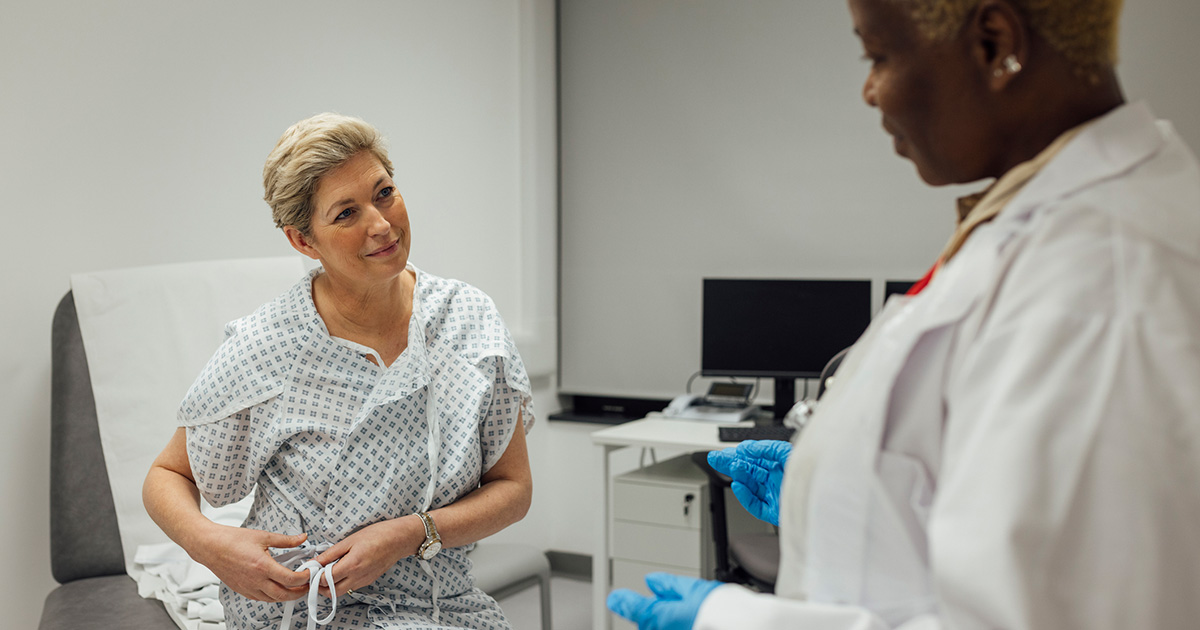
Mammograms are a standard screening radiology exam recommended for asymptomatic women over the age of 40 for early detection of breast cancer. Breast cancer is the most common cancer among women. Recommended yearly mammographic screening helps detect breast cancer early which is easily amenable to less invasive treatment, decreasing mortality, and morbidity and significantly improving survival. So, what happens if you get a call back from your screening mammogram and further testing is recommended? There are several reasons for screen callbacks.
“When a woman has her first mammogram, that is her baseline exam,” said Dr. Preeti Banga, breast imaging fellowship-trained ARS radiologist at MSU Health Care at McLaren Greater Lansing Breast Imaging Center. “The radiologist determines the breast density and looks for imaging findings that may merit further diagnostic workup. Since no prior mammograms are available, both breasts are compared to one another, particularly looking for asymmetries. Significant asymmetry could be one of the reasons for call back.”
In women who regularly have their mammograms, the comparison is made with prior mammograms to evaluate for changes occurring in the breast over time—for instance, new calcifications, mass, or developing asymmetries.
Breast Density
The breast’s density is the foremost parameter the radiologist evaluates. Not only does it affect the sensitivity of mammograms for detection of breast cancer, but also women with dense breasts have inherently increased risk of breast cancer.
A woman’s breast consists of three kinds of tissue including fibrous, glandular (the part of the breast that makes milk), and fatty tissues. When a woman’s breast has a greater percentage of fibrous and glandular tissue than fat tissue, it is known as dense breasts.
“It’s important for women to know they have dense breasts because it does have a higher risk of developing cancer, and this also makes it harder to see if cancer hiding in the dense tissue,” said Jackie Riley, lead mammography technologist at MSU Health Care at McLaren Greater Lansing Breast Imaging Center. “If you have dense breasts, we will inform you about it. This encourages you to talk to your doctor about your cancer risk and available supplemental screening options such as whole breast ultrasound.”
Digital breast tomosynthesis, also called 3D mammography, provides multiple images of the breast in slices from many different angles, akin to flipping through the pages of a book instead of just looking at the whole book by its cover. This mammographic screening tool is particularly useful for women with dense breasts.
“3D mammography, especially with dense breasts, improves early cancer detection and also reduces screen call back rates for findings that may just superimposition of the dense breast tissue. It is also particularly suited to pick up architectural distortion that could be the only imaging finding in some types of breast cancer,” said Dr. Banga.
The Next Steps
“When a woman is notified of a call back from a screening mammogram, she comes in for further diagnostic evaluation. This typically includes obtaining additional mammographic imaging, and breast ultrasound. Based on the findings of this diagnostic evaluation, final recommendations are made and discussed with her at the same appointment that could vary from returning to screening mammograms vs close serial imaging follow-up versus image-guided biopsy procedures.” said Dr. Banga.
Getting a call back from a screening such as a mammogram can be a stressful and worrisome event. The MSU Health Care at McLaren Greater Lansing Breast Imaging Center is designated as a Breast Imaging Center of Excellence by the American College of Radiology, a testament to providing patients with the highest quality care for diagnostic testing and screening so they can be rest assured of getting the best available results.
Mammograms saves lives. October is breast cancer awareness month and a good time for woman to take action and schedule their mammograms. McLaren Greater Lansing offers online scheduling for mammograms. To schedule your next screening, click here.